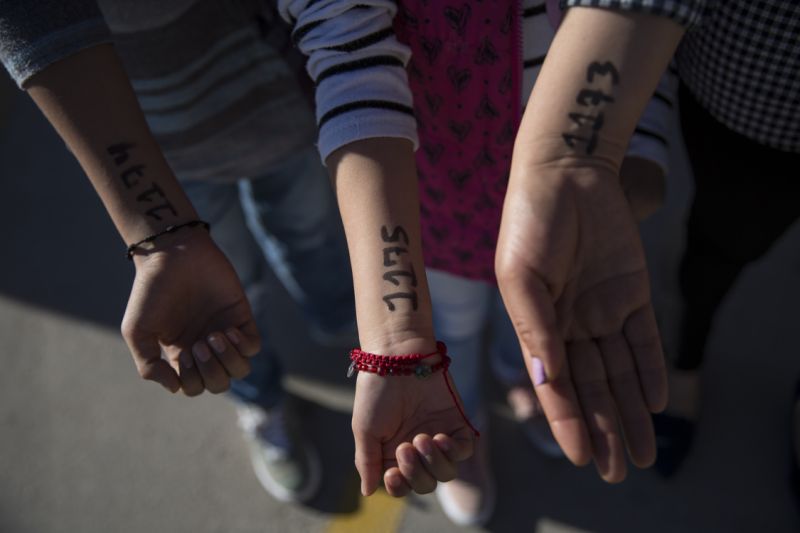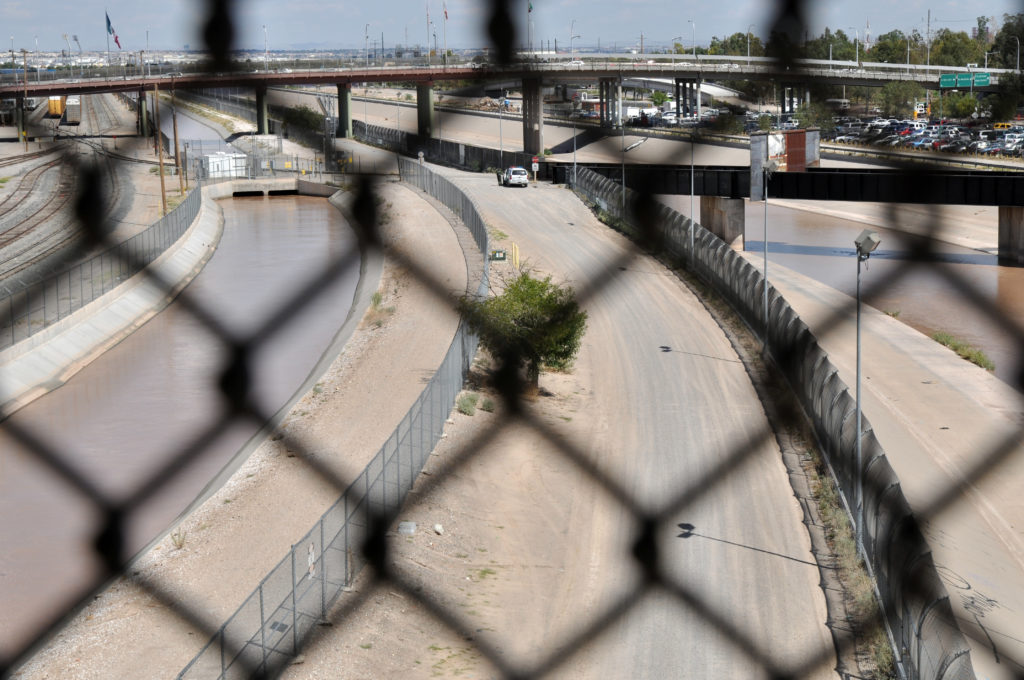Amid escalating news reports of unarmed adults and children being teargassed over an international border by the United States, infants and children being forcibly, and permanently, taken from their parents, and asylum-seekers being held in detention camps, yet another story and image appeared:

Photo credit: Adria Malcolm for Yahoo! News
As some readers and viewers recoiled at the images, others questioned whether it was even real or if the photograph had been misappropriated or mislabeled.
The image is real and the practice well-documented; the photograph accurately shows what volunteers with asylum-seekers are doing at a particular port of entry on the border with the United States.
The numbers are to record their place in line as they wait for their chance to meet with an immigration officer in the Juarez-El Paso region:
According to various advocates and others who observed the situation on the bridges over the summer, it was volunteers with the Mexican Red Cross who first created a waiting list to help maintain order within the encampments as asylum seekers waited for their turn to cross. The list was then transferred to the Casa del Migrante along with the asylum seekers, when they were forced to move there in November. Accounts vary on when, exactly, and with whom, the practice of tracking migrants with numbers on their arms originated, but it has now become a part of the process for all who wish to seek asylum at one of the U.S. ports of entry in El Paso.
What, in part, started as an effort by the municipal government in Juarez to offer shelter to the growing encampment of asylum seekers on the bridges has evolved into a complicated, ad hoc arrangement of Mexican NGOs, municipal, state, and federal agencies to funnel asylum seekers away from the U.S. ports of entry in El Paso. At the center are U.S. Customs and Border Protection officials, who control the flow of migrants, notifying Mexican immigration authorities in Juarez how many people from the list can be allowed over the border each day and when.
As the story points out, this is similar to a practice at the San Ysidro port of entry, but in that case their numbers in line are kept in a notebook:
The notebook holds the names of hundreds of asylum seekers — from Guadalajara to Ghana — all trying to make their case at the San Ysidro Port of Entry.
It is an improvised response, an attempt to inject order into chaos. Getting in the notebook is paramount. For the desperate foreigners whose future hinges on it, the stakes are high.
Nearly 2,000 people seeking asylum in the United States have put their name in the notebook. Its origins are unclear, but it was created after U.S. border officials began to limit the number of asylum seekers allowed to enter the San Ysidro Port of Entry.
The notebook became a way for the immigrants to keep track of who is next in line. The book’s guardian — always an asylum seeker — scrawls each person’s name and country of origin in blue ink. The names of those who already entered the port of entry to make their case for refuge are highlighted in yellow or pink.
The situation at the U.S.-Mexico border has been evolving rapidly as more people, mostly from Central America, arrive there to seek entry in the United States. Many are fleeing untenable violence and chaos in their home countries, but they have been preceded by corrosive disinformation and rumormongering that quickly erupted into violence and human misery for those who are unwilling or unable to give up their place in a months-long line:
Since at least April 2018, US and Mexican authorities have unlawfully required asylum seekers to put their names on a quasi-official asylum waitlist on the Tijuana side of the San Ysidro Port of Entry, instead of allowing people to request asylum directly at the border. The list is jointly coordinated by the asylum seekers themselves and Mexican authorities, in response to US limits on the number of asylum seekers they will receive each day. People seeking asylum without identity documents are prohibited from joining the list of those waiting to request asylum, and if they miss the day their number is called, they risk losing their places entirely.
By turning away asylum-seekers at ports of entry, US authorities are violating their right to seek asylum from persecution and manufacturing an emergency along the border. This queue along the border exposes people who seek asylum to risks of detention and deportation by Mexican immigration officials, and exploitation by criminal gangs.
The pressure on Mexican and American authorities could be relieved by additional resources on both sides of the border, but as yet, those resources have not arrived.
During previous caravans, individuals have written lawyers’ phone numbers on their own forearms as they enter ports of entry, not knowing whether they will be returned to their home countries, detained, allowed into the United States outright, or if there will be some other unforeseen outcome as their asylum claims are processed.
However, the practice of writing numbers in line on the arms of asylum-seekers is new, and this photograph is real.
- City News Service/Fox 5 San Diego. "PHOTOS: Border officials hold drill with riot gear, fake tear gas."
- Dickson, Caitlin. "Take a number: Migrants, blocked at the border, wait their turn to apply for asylum."
- Del Toro, Jesús. "Estas fotos de la caravana migrante en México evocan un pasado atroz, pero sus razones son muy diferentes."
- Amnesty International via ReliefWeb. "Americas: Stuck at the door - The urgent need for protection of Central American refugees, asylum seekers and migrants in the caravans."
- Ocaño, Manuel. "¿Por qué los migrantes de la caravana llevan un número telefónico anotado en el brazo al pedir asilo?"
- Carcamo, Cindy. "For many waiting in Tijuana, a mysterious notebook is the key to seeking asylum."

